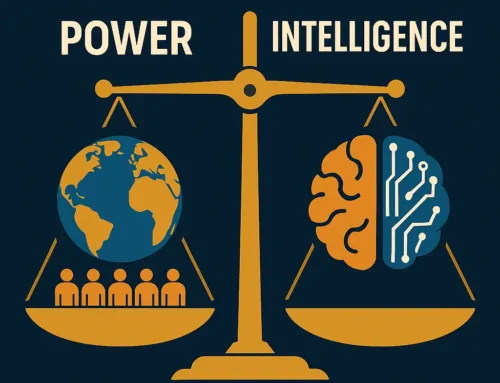
Approx. read time: 4.3 min.
Post: Banking Fraud Prevention: Cybersecurity Risks & Online Security
When banking online, over the phone, or in person, understanding the landscape of cybersecurity risks is crucial to safeguard your financial information and assets. Cyber threats have evolved, exploiting technological, human, and systemic vulnerabilities. Here’s an in-depth look at various cybersecurity risks and warnings across these banking modalities, emphasizing social engineering tactics, which manipulate individuals into divulging confidential information.
Online Banking Risks and Warnings
Phishing Scams
Phishing attacks are fraudulent attempts to obtain sensitive information such as usernames, passwords, and credit card details by disguising oneself as a trustworthy entity in digital communication. Cybercriminals might send you an email that appears to be from your bank, complete with logos and official language, directing you to a fake website where you’re asked to enter personal information.
- Warning: Verify the authenticity of any communication. Look for signs of phishing, like poor spelling or grammar, and verify the sender’s email address. Use bookmarks for accessing banking websites rather than clicking on links in emails.
Malware and Ransomware
Malicious software, or malware, includes various forms of harmful software, like viruses and ransomware. Ransomware locks or encrypts your data, demanding a ransom for its release. Malware can steal sensitive information, including banking credentials, by logging keystrokes or hijacking banking sessions.
- Warning: Ensure your computer’s operating system, browser, and security software are up-to-date. Be cautious about downloading software or opening attachments from unknown sources.
Unsecured Wi-Fi Networks
Using unsecured or public Wi-Fi networks to access online banking can expose your data to interceptors. Cybercriminals can create fake Wi-Fi hotspots or intercept data transmitted over an unsecured network.
- Warning: Avoid conducting financial transactions over public Wi-Fi. Use a trusted VPN service for encryption, even on home networks, to protect your data.
Phone Banking Risks and Warnings
Vishing (Voice Phishing)
Vishing is a form of phishing where fraudsters use phone calls to scam the victim into divulging personal, financial, or security information. They might impersonate bank officials, claiming there’s an issue with your account and requesting your account details or security codes.
- Warning: Be skeptical of unsolicited calls asking for personal or banking information. If in doubt, hang up and contact your bank directly using the number on the back of your card or their official website.
SIM Swapping
In a SIM swap scam, attackers deceive your mobile carrier into switching your phone number to a new SIM card, giving them control over your number. This can compromise two-factor authentication (2FA) and allow unauthorized access to your bank accounts.
- Warning: Secure your mobile account with a PIN or password. Regularly check with your carrier that no unauthorized SIM swap requests have been made.
In-Person Banking Risks and Warnings
ATM Skimming and Shimming
ATM skimming involves attaching devices to ATMs that capture card data, while shimming targets the card’s chip with thinner skimmers. These devices can steal card information, which is then used to clone your card or conduct unauthorized transactions.
- Warning: Inspect ATMs for tampering or unusual devices before use. Prefer ATMs in well-lit, secure locations. Shield the keypad when entering your PIN.
Shoulder Surfing
This technique involves someone directly observing you enter your PIN or other sensitive information. It can occur at ATMs, banks, or even when entering passwords on a device in public.
- Warning: Be aware of your surroundings and cover the keypad when entering PINs or passwords. Be cautious when accessing sensitive information in public places.
Social Engineering Beyond the Basics
Social engineering exploits human psychology rather than technical hacking techniques to gain access to buildings, systems, or data. Here are a few advanced tactics:
- Pretexting: The attacker creates a fabricated scenario or pretext to engage the victim in a manner that increases the chance of information disclosure.
- Baiting: Similar to phishing, but with the promise of an item or good to steal personal information.
- Quid Pro Quo: Offers a benefit in exchange for information. This benefit may be a service, such as fixing a computer issue that deceitfully requires sensitive information access.
General Precautions Across Banking Methods
- Educational Vigilance: Stay informed about the latest in security threats and best practices for digital hygiene. Banks often provide resources and alerts for their customers.
- Use of Security Features: Leverage all available security measures offered by your bank, such as biometric authentications, security questions, and 2FA, to add layers of protection.
- Monitoring and Alerts: Regularly review account statements and set up banking alerts for unusual activities, ensuring you are promptly informed of potentially fraudulent transactions.
Remember, awareness and vigilance are your best defenses against cyber threats. Regularly updating your knowledge on cybersecurity risks and applying these best practices can significantly reduce your vulnerability to these evolving threats.
Cyber Security In 7 Minutes | What Is Cyber Security: How It Works? | Cyber Security | Simplilearn
Related Posts:
ATM hacking has gotten so easy, the malware’s a game(Opens in a new browser tab)
Protect Your Finances: Online Banking Security & Fraud Prevention(Opens in a new browser tab)
What’s behind this 1,000-character phishing URL?(Opens in a new browser tab)
RCMP Fraud Prevention: Avoid Phishing Scams in New Brunswick(Opens in a new browser tab)








